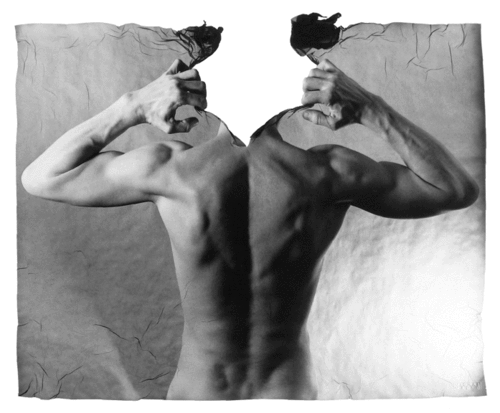STUDIO PRACTICE
Michal Macku
since the end of 1989, Michal Macku has used his own creative technique which he has named "gallage"(he ligature of collage and gelatin) he technique consists of transfer the exposed and fixed photographic emulsion from its original base on paper.
This transparent and plastic gelatin substance makes it possible to reshape and reform the original images changing their relationships and endowingthem with new meanings during the transfer.
lucas Simoes
The cut-out portraits of Brazilian artist Lucas Simões are pretty amazing, consisting of layering the same photo up to 10 times, he invites intimate friends over to tell him a secret as he takes their portrait. However, his intention was not to hear their secret, but to capture the expressions of each one at the moment they revealed their secret.
Simoes’s also asked each one to choose a song for him to listen in his earphones while he photographed them.
 |
Maurizio Anzeri
Maurizio Anzeri makes photographic portraits by sewing directly into found photographs. His embroidered patterns garnish the figures like elaborate costumes, suggesting a psychological aura, as if revealing the subject’s thoughts or feelings. The appearance of the photographs is often at odds with the sharp lines and shimmer of the threads. The result is a dimension where history and future converge.

Sarah Ann Loreth
In her work, Loreth aims to convey a quietness of emotion with a connection to her natural surroundings. She uses colour correction to create an imagined reality that is nonetheless extremely human and toes the line between darkness and light.
Through death, destruction, and suicide, she examines the darker side of the human spirit. Through her creative practice she has concluded that death should not be feared.

Kale Gustafsson
The Swedish photographer and director Kalle Gustafsson is an expert at capturing cinematic moments redolent with atmosphere.
Gustafsson’s intelligent work is notable for its casual fluidity and its natural style and grace. The combination of visual references and Gustafsson’s own skills together make his models seem relaxed and beautiful in a thoroughly organic way.

Sarah Cheng- De Winne
Sarah specializes in portraiture, fashion, and conceptual photography, keen to discover new ways of representing identities through photography.
Sarah uses the combination of fashion photography and social commentary on how women are portrayed in the media to present her ideas. Aside from her fashion work, she has also done self-portraits to help her show her perspective of women's issues and her own identity as a woman.

Thomas Kettner
Thomas Kettner was born and raised in He is now living back in germany, but will always keep his love for the black continent South Africa. He frequently returns to do new photoshoots Kettner is able to capture warmth simplicity and Kettner pictures capture the emotion within the moment and not just the moment its self. Kettner uses the natural lighting to create different effects in his photography.

2.tudio lighting terms
Rembrandt
There are two things that make up Rembrandt Lighting… A light on one half the face, and a triangle of light on the shadowed side of the face.
If it’s ‘real’ Rembrandt lighting, the triangle shadow should be no wider than the eye, and no longer than the nose. The thing that distinguishes Rembrandt Lighting from simple short lighting is the triangle of light

Clamshell
is a common way to photograph a head shot, often used in the fashion world. The general idea is you take 2 light sources, or a light source and a reflector. Both of them are roughly on-axis with the center of the person's face. The end effect is that there are reduced shadows from any imperfections in a person's face.

Backlight
The back light is placed behind the subject and lights it from the rear. Rather than providing direct lighting,its purpose is to provide definition and subtle highlights around the subject's outlines. This helps separate the subject from the background and provide a three-dimensional look.

Rim lighting
Occurs when the main light is placed behind the subject so that the subject's face is completely in shadow, but there is a rim of light around the subject's head, like the corona in a full eclipse

4-health and safety regulation in the studio
•
Follow the
instructions and training given by employer or (the photographer) in the safe
use of particular items of equipment such as photographic equipment, studio lights,
darkroom and computer equipment as appropriate.
•
Inform their
employer (the photographer) of any work situation which is a serious and
immediate danger to health and safety, for example broken equipment.
•
Inform their
employer (the photographer) of any shortcomings in the arrangements for
ensuring the health and safety of employees.
Under the Management
of Health and Safety at Work Regulations 1999, employers need to assess the
risks to the health and safety of employees and others who may be affected by
their activities. This may require employers their employer taking advice
from other professionals on specific risks.
Photographers risk
assesment
•
Identify hazards.
•
Decide who might be
harmed and how.
•
Evaluate the risks
and decide on precautions.
•
Record your findings
and implement them.
•
Review your
assessment and update if necessary.
|





Nessun commento:
Posta un commento